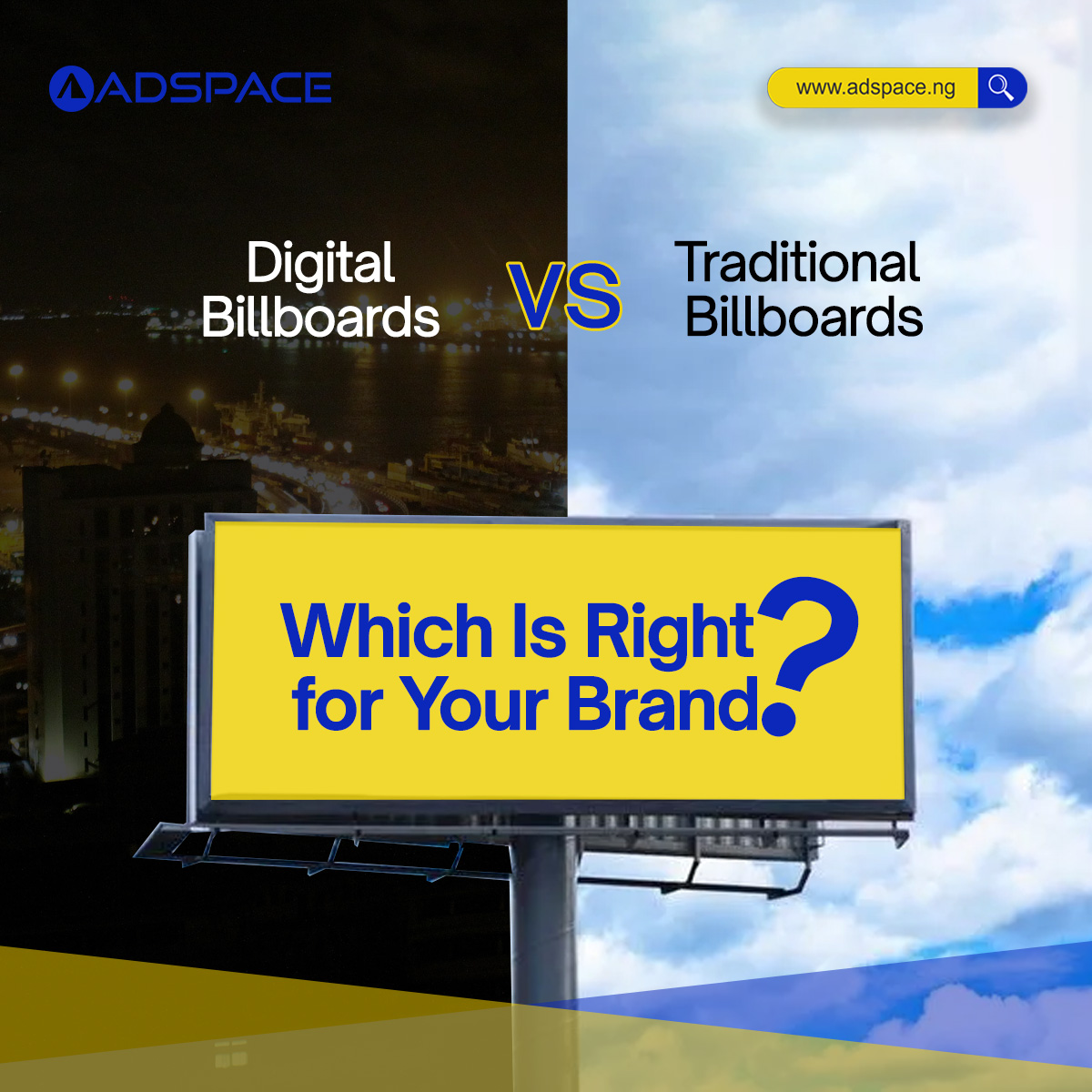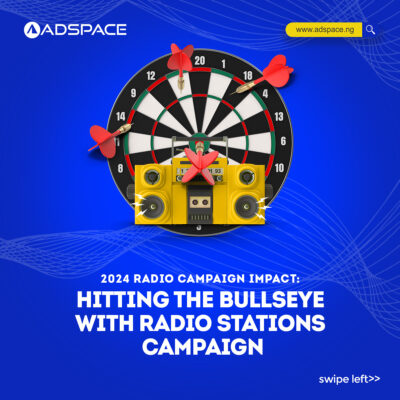In the dynamic realm of advertising, choosing the right channel can make or break your brand’s visibility. Billboard advertising, a time-honored form of outdoor promotion, offers two distinct options: digital billboards and traditional billboards. Each possesses unique strengths and considerations, making the decision complex but pivotal. In this guide, we delve into the world of billboard advertising and dissect the advantages and disadvantages of digital billboards and traditional billboards. By the end, you’ll be equipped to make an informed choice that aligns perfectly with your brand’s goals and target audience.
Billboard Advertising Essentials
![]()
Billboard advertising, a stalwart in the world of marketing, is all about high-impact visuals in real-world settings. Whether you’re cruising down the highway, strolling through a bustling urban area, or waiting at a traffic signal, billboards demand attention. They’re unskippable, unblockable, and unforgettable.
Billboards can be found virtually everywhere, from city centers to rural highways. They serve as powerful reminders of brands, events, and messages that businesses want to convey. Their size, strategic placements, and creative design are carefully engineered to grab your attention and leave a lasting impression.
Digital Billboards vs Traditional Billboards: A Comparative Analysis
The debate between digital billboards and traditional billboards is like choosing between an e-book and a physical book. Both have their merits, and the decision hinges on your objectives and preferences. Let’s break down the advantages of each, beginning with digital billboards.
Advantages of Digital Billboards
Digital billboards represent a cutting-edge evolution of outdoor advertising. They offer dynamic content capabilities, enabling you to change your message quickly and even schedule different ads for different times of the day. The dynamic nature of digital billboards adds a layer of interactivity and immediacy that traditional billboards can’t match.
Real-time updates are another advantage of digital billboards. In emergencies or changing circumstances, you can swiftly convey critical information. This is particularly valuable for traffic updates, event promotions, or crisis management.
Advantages of Traditional Billboards

Traditional billboards, often referred to as static billboards, are cost-effective and straightforward. Their simplicity can be a strength, as they rely on a single, static message that people see as they pass by. This simplicity has an enduring quality – a well-designed static billboard can be memorable and stand the test of time.
A significant advantage of traditional billboards is their cost-effectiveness. The production and installation costs for static billboards are generally lower than their digital counterparts. Plus, there are no ongoing energy costs associated with displaying digital content.
Choosing Digital Billboards: Scenarios and Considerations
Choosing digital billboards is an enticing option when your campaign demands flexibility, dynamic content, and real-time updates. Here are some scenarios where digital billboards shine:
- Events and Promotions: If you’re promoting an event with a rapidly changing schedule, digital billboards are ideal. You can update event details, timing, and even weather-related information in real time, ensuring visitors have the most accurate information.
- Multiple Messages: For businesses with diverse offerings or messages, digital billboards allow you to cycle through various advertisements in a single location. This is especially useful for businesses with multiple products, services, or ongoing promotions.
Choosing Traditional Billboards: Scenarios and Considerations
Traditional billboards hold their own set of advantages, making them the ideal choice in specific scenarios:
- Timeless Branding: If your brand relies on timeless messaging and visual elements, a static billboard can effectively communicate your brand identity without needing frequent updates.
- Cost-Efficiency: When working with a tight budget, traditional billboards make the most financial sense. You won’t incur costs related to digital content creation, management, or electricity.
Key Differences Between Digital and Traditional Billboards
To make an informed decision, it’s crucial to understand the key differences between digital and traditional billboards. These differences will help you determine which medium aligns best with your brand’s objectives and target audience.
Dynamic Content vs Static Messages
The primary difference between digital and traditional billboards is the nature of the content they display. Digital billboards feature dynamic content that can change frequently, enabling you to showcase different messages throughout the day. This dynamic quality is ideal for businesses with ever-changing promotions, event schedules, or real-time updates.
In contrast, traditional billboards display static messages. Once the content is up, it remains the same until manually replaced. This can be an advantage for brands that rely on consistent messaging or want their billboard to serve as a landmark without frequent changes.
Cost Comparison
The cost factor is a critical consideration when choosing between digital and traditional billboards. Digital billboards typically involve higher upfront costs due to the technology required for digital displays. These costs include the digital billboard itself, content creation, and ongoing electricity expenses.
Traditional billboards, on the other hand, have lower upfront costs and minimal ongoing expenses. The simplicity of static messaging means there’s no need for expensive technology or ongoing electricity costs. This cost-efficiency makes traditional billboards an attractive choice for businesses with limited budgets.
Targeting and Interactivity
Digital billboards excel in targeting specific audiences and interactivity. Their dynamic content capabilities enable you to tailor messages to different times of the day or specific demographics. For example, you can display breakfast-related ads in the morning and dinner-related ads in the evening, catering to different target groups.
In terms of interactivity, digital billboards can incorporate features like QR codes or interactive touchscreens, allowing viewers to engage with the content in real time. This level of engagement can be valuable for brands looking to create an immediate connection with their audience.
Flexibility and Content Updates
The flexibility of digital billboards extends beyond targeting and interactivity. They offer real-time content updates, making them perfect for conveying rapidly changing information. In emergencies or crisis situations, you can quickly update your message to provide essential information to the public.
Traditional billboards, with their static messaging, lack the same level of flexibility. Once the content is in place, it remains there until manually replaced. While this may seem limiting, it can be an advantage for brands that rely on consistency and timeless messaging.
As we explore the advantages and differences between digital and traditional billboards, it’s important to remember that the choice between the two ultimately depends on your brand’s unique objectives, target audience, and budget. In the second part of this guide, we’ll delve deeper into real-world success stories, helping you visualize the impact of each type of billboard. We’ll also discuss how to create hybrid advertising strategies that combine the strengths of both digital and traditional billboards for maximum impact. Billboard advertising is an art, and by the end of this guide, you’ll be well-prepared to make an informed and strategic choice for your brand.
Part II: Real-World Success Stories
Real-world success stories offer valuable insights into the effectiveness of both digital and traditional billboards. Let’s explore some cases where these advertising channels have made a significant impact.
Digital Billboard Success Stories
- Pepsi’s Dynamic Campaign: Pepsi launched a highly effective digital billboard campaign in Times Square. The billboard featured a live video stream, allowing viewers to interact in real time. By encouraging engagement through social media and displaying user-generated content, Pepsi created a buzz that extended far beyond the billboard itself.
- Coca-Cola’s Personalized Messaging: Coca-Cola used digital billboards to create a personalized experience for consumers. By using data from nearby Bluetooth-enabled devices, the billboards displayed messages that were relevant to people in the vicinity. This innovative approach increased brand engagement and left a memorable impression.
Traditional Billboard Success Stories
- Apple’s Iconic Static Billboards: Apple is renowned for its minimalist and impactful marketing. The company often uses static billboards to display a single product image and a succinct tagline. These billboards create a strong visual impact, enhancing brand recognition and maintaining the simplicity that’s synonymous with Apple.
- McDonald’s Time-Tested Billboards: McDonald’s utilizes traditional billboards to great effect. Their billboards typically feature enticing product imagery, often focusing on their iconic items like the Big Mac. These static billboards are designed to create immediate cravings, prompting viewers to visit the nearest McDonald’s location.
These success stories illustrate that both digital and traditional billboards have their place in effective advertising campaigns. The choice between the two depends on your specific brand goals and how you want to engage your audience.
Part III: Making the Right Choice for Your Brand
Choosing between digital and traditional billboards is a significant decision for your brand. It requires a deep understanding of your objectives and a clear picture of your target audience. Let’s explore some factors to consider when making this important choice.
Factors to Consider When Choosing Between Digital and Traditional Billboards
- Campaign Objectives: Start by defining your campaign’s objectives. Are you looking to create immediate engagement, or is your goal to establish a timeless brand presence? If your campaign involves real-time updates and interactivity, digital billboards may be the way to go. For long-term branding, traditional billboards can be effective.
- Target Audience: Consider your target audience and their preferences. Are they tech-savvy and likely to engage with digital content? Or do they respond better to simple, static messages? Understanding your audience’s behavior and preferences is crucial in making the right choice.
- Budget: Evaluate your budget for the campaign. Digital billboards typically have higher upfront costs due to technology and content creation, as well as ongoing electricity expenses. Traditional billboards are often more cost-effective, making them an attractive choice for businesses with limited budgets.
- Content Strategy: Examine your content strategy and how frequently your message needs to change. Digital billboards allow for real-time updates, which are beneficial for businesses with rapidly changing information or promotions. If your messaging is consistent over time, a traditional billboard may be sufficient.
- Location and Placement: Consider the location and placement of your billboard. Certain locations and settings may be more suitable for digital billboards, while others may benefit from the simplicity of traditional billboards. It’s essential to align your choice with the physical surroundings and visibility of your billboard.
- Branding Goals: Reflect on your branding goals. What image do you want to convey to your audience? If you aim for a modern, tech-forward image, digital billboards may be the better fit. For brands that prioritize simplicity and timelessness, traditional billboards can effectively communicate that message.
By carefully weighing these factors, you can make an informed choice between digital and traditional billboards that aligns perfectly with your brand’s objectives and resonates with your target audience.
Part IV: Key Differences Between Digital and Traditional Billboards
In this section, we’ll delve deeper into the primary distinctions between digital and traditional billboards. These differences play a vital role in determining which billboard type best suits your brand’s needs.
Dynamic Content vs Static Messages
Digital billboards are known for their dynamic content. They have the capability to display changing messages, making them ideal for conveying diverse information throughout the day. This dynamic nature is particularly useful for promotions, events, and real-time updates.
Traditional billboards, often referred to as static billboards, display static messages that remain unchanged until manually replaced. While this might seem limiting, it can be an advantage for businesses that rely on consistent branding or messaging.
The dynamic content of digital billboards offers real-time engagement opportunities. Whether you want to display weather updates, countdowns to events, or interactive elements like QR codes, digital billboards enable direct interaction with your audience.
In contrast, traditional billboards are timeless and enduring. They offer a fixed message that becomes a part of the local landscape, serving as a reliable landmark for your brand.
Cost Comparison
Cost is a significant factor when choosing between digital and traditional billboards. The cost structure for each type differs, and understanding the financial implications is crucial.
Digital billboards typically involve higher upfront costs. The technology required for digital displays, along with content creation and management, contributes to these initial expenses. Additionally, digital billboards incur ongoing electricity costs for display.
Traditional billboards are more cost-effective in terms of upfront expenses. Their simplicity and static messaging require less investment in technology and content creation. Moreover, there are no ongoing electricity costs associated with displaying static content.
Targeting and Interactivity
Digital billboards excel in targeting specific audiences and interactivity. The dynamic nature of their content allows for precise messaging based on time of day, location, or demographics. For instance, you can display breakfast-related ads in the morning and transition to dinner-related ads in the evening, catering to different target groups.
Interactivity is another strength of digital billboards. Features like QR codes, touchscreens, or live updates enable direct engagement with your audience. This immediate interaction can create a memorable and impactful brand experience.
Traditional billboards, with their static messaging, don’t offer the same level of precision in targeting or interactivity. However, they excel in delivering consistent, clear, and timeless messages that leave a lasting impression.
Flexibility and Content Updates
The flexibility of digital billboards extends beyond targeting and interactivity. They offer real-time content updates, making them ideal for conveying rapidly changing information. In emergency situations or evolving circumstances, digital billboards can quickly update messages to provide essential information to the public.
Traditional billboards, with their static messaging, lack the same level of flexibility. Once the content is in place, it remains unchanged until manually replaced. While this may seem limiting, it’s an advantage for brands that rely on consistent messaging and want their billboard to serve as a long-term landmark.
Understanding these key differences is essential in making an informed choice between digital and traditional billboards. Your brand’s objectives, target audience, budget, and content strategy will ultimately guide your decision. In the final part of this guide, we’ll discuss the concept of combining both types of billboards to create hybrid advertising strategies that leverage the strengths of each medium.
Part V: Finding the Perfect Balance – Hybrid Billboard Advertising Strategies
In the previous sections, we’ve explored the advantages and differences between digital and traditional billboards. However, in the real world of advertising, the lines between these two mediums aren’t always distinct. In fact, many successful campaigns leverage a combination of both to maximize their impact. Here’s how you can find the perfect balance in your billboard advertising strategy:
Combining the Strengths of Digital and Traditional Billboards
Hybrid billboard advertising is the art of leveraging the strengths of both digital and traditional billboards in a single campaign. It’s a strategic approach that allows you to create a more comprehensive and effective brand presence.
Dayparting and Content Synchronization
One effective hybrid strategy involves using digital billboards for dayparting. This means displaying different content based on the time of day. For example, a restaurant could promote breakfast items in the morning and switch to lunch and dinner specials as the day progresses.
Targeted Messaging and Branding
In a hybrid campaign, digital billboards can be employed for targeted, localized messaging. They can display specific promotions or greetings to the local community. Meanwhile, traditional billboards can reinforce brand identity and establish a consistent presence.
Storytelling and Engagement
Digital billboards are excellent for short, engaging messages. They can prompt viewers to take immediate action through QR codes or real-time updates. Traditional billboards, on the other hand, can be used for storytelling. They can convey the essence of your brand’s story, history, or values.
Creating Memorability and Impact
By combining digital and traditional billboards, you create a layered approach to advertising. Digital billboards grab attention with real-time updates and engagement, while traditional billboards make your brand memorable through static, iconic messaging.
Conclusion: Crafting an Effective Billboard Advertising Strategy
In the world of advertising, the choice between digital and traditional billboards isn’t always clear-cut. It depends on your brand’s objectives, your target audience, your budget, and your content strategy. Understanding the key differences between these billboard types is essential in making an informed choice.
Whether you opt for the dynamic content of digital billboards or the enduring simplicity of traditional billboards, your choice should align with your brand’s goals and how you want to engage your audience. And remember, a hybrid approach can be a powerful strategy that combines the strengths of both mediums.
By thoughtfully considering these factors and applying the insights from this guide, you can make the perfect choice for your brand’s billboard advertising. Embrace the world of billboard advertising, and your brand will undoubtedly shine.
FAQ: Digital Billboards vs Traditional Billboards
- Are digital billboards more expensive than traditional billboards?Digital billboards often involve higher upfront costs due to the technology required for digital displays. Traditional billboards have lower upfront expenses, making them a more cost-effective choice.
- How can I update content on a digital billboard?Digital billboards enable content updates through digital interfaces. You can schedule changes or real-time updates remotely.
- Which type of billboard is better for long-term branding?Traditional billboards are ideal for long-term branding, as their static messages create a consistent and memorable presence.
- Do digital billboards work better for targeting specific audiences?Yes, digital billboards excel in targeting specific audiences due to their dynamic content capabilities. You can tailor messages based on demographics, time of day, and location.
- Can I use both digital and traditional billboards in a single campaign?Yes, a hybrid approach combining the strengths of both digital and traditional billboards can be highly effective in creating a comprehensive brand presence.
- What factors should I consider when choosing between digital and traditional billboards for my campaign?Factors to consider include campaign objectives, target audience, budget, content strategy, location, and branding goals. Carefully evaluating these factors will help you make the right choice.
- How can I create engaging content for digital billboards?Engaging content for digital billboards often includes dynamic visuals, concise messaging, real-time updates, and elements like QR codes or interactive features.
- What role do traditional billboards play in creating brand memorability?Traditional billboards are excellent for creating brand memorability through iconic and static messaging. They establish a long-lasting presence that becomes synonymous with your brand.
- Can traditional billboards be interactive?Traditional billboards are primarily static and lack interactivity. Interaction is a strength of digital billboards, which can include features like touchscreens or QR codes.
- Is there an ideal mix between digital and traditional billboards for an advertising campaign?
The ideal mix between digital and traditional billboards depends on your specific campaign objectives and how you want to engage your audience. A hybrid approach can often yield the best results.
If you have any more questions or need further assistance in choosing the right billboard type for your brand, feel free to reach out to our experts.
As we conclude this guide, we hope you’ve gained valuable insights into the world of digital billboards, traditional billboards, and the hybrid strategies that can elevate your brand’s presence. Your brand is unique, and your billboard advertising strategy should reflect that uniqueness. In the dynamic realm of advertising, we encourage you to explore new horizons and create impactful campaigns that resonate with your audience. Billboard advertising is an art, and with the right strategy, your brand will shine bright on the horizon. If you have any further questions or need guidance on your advertising journey, don’t hesitate to get in touch. Your success is our mission.










